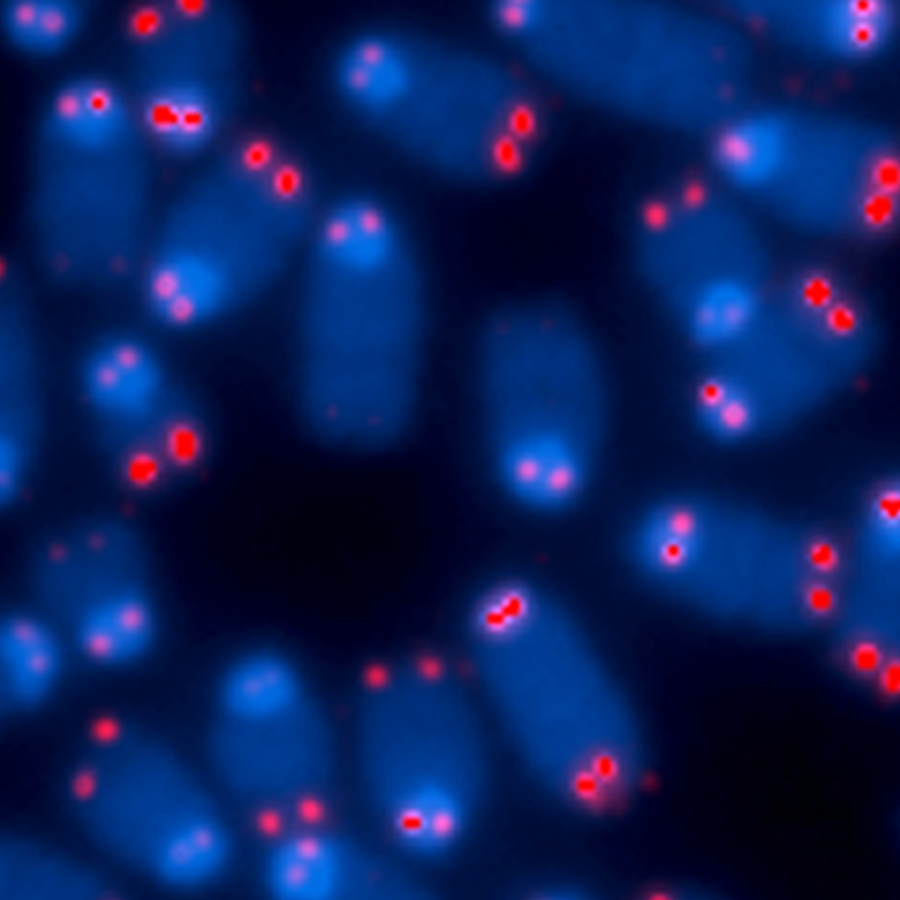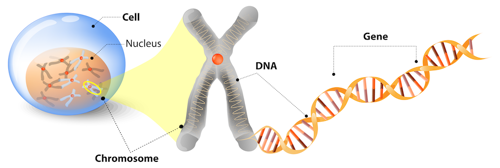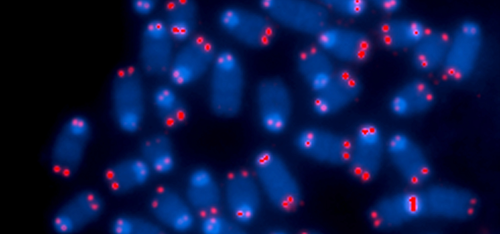
Why do cells age?
March 26, 2014

- Related Topics:
- Aging,
- Cancer,
- Developmental biology,
- Cell biology,
- Editor's choice
A middle school student from New York asks:
"Why do cells age?"
Cells age mostly because they lose a bit of their DNA each time they divide. After around 40 or 50 divisions, they lose too much DNA to keep dividing. They’ve now entered old age.
These cells can then continue on doing their jobs or they can die by suicide. Either way they can no longer divide and make new cells.
An exception to this is cancer cells. As they become cancerous, they learn how to not lose DNA during each division. The end result is that they can keep dividing forever.
What I want to do for the rest of the answer is go over this in a bit more detail. First I’ll talk about how DNA is packaged and copied in cells. Then I’ll talk about the different ends that an old cell can come to.
DNA + chromosomes
Every cell has at least one very long molecule called DNA in it. DNA is very important because it is like an instruction manual for making each of us who we are. For example, this molecule tells us our hair color and is part of the story of how tall we will grow to be.
Each cell has lots of DNA in it (each human cell has 6 feet of it). Most human cells have 46 very, very long molecules of DNA packaged in something called chromosomes.

To make more cells, one cell copies its DNA and divides into two cells. Each of the two daughter cells ends up with one copy of the DNA.
Most of the DNA in each cell has important instructions in it. But at both ends of each chromosome there is a long piece of DNA that doesn’t code for anything. The ends of these chromosomes are called the telomeres.
Telomeres protect the important DNA in the middle of the chromosomes. They also play a very important part in a cell’s aging process.
Natural cell aging
When a cell’s telomeres get too short, it has two options. It can either go for “senescence” or "apoptosis."
In the first case, senescence, the cell doesn’t divide anymore. Even though it can’t make new cells, it continues to live and do its job.
In the second case, apoptosis, the cell dies. But it doesn’t die in any old way. Its death is highly regulated. The cell makes sure not to hurt any of the surrounding cells and disposes of itself properly.
Every time a cell divides into two cells, it doesn’t do a very good job of copying all of its DNA. It does a great job on the DNA in the middle, but each time it can’t quite make it to the very ends of the chromosome. The ends of the telomeres don’t end up in the new copy.
What this means is that each time the DNA is copied, these telomeres get a little bit shorter. This isn’t a big deal the first few times. But after many copies, the telomeres get too short and the cell can’t divide anymore. This signals the end of the cell’s dividing stage.

Both options are important and useful to an organism’s survival in the normal life cycle of healthy cells. These cells slowly lose their telomeres, each dividing until it cannot divide anymore.
However, sometimes traumatic events happen and cells cannot follow either of these paths. In this case, cells take a third route—necrosis.
When things go wrong
As I said, most cells follow the above process, but some cells aren’t so lucky. These poor cells undergo a traumatic event that keeps them from old age. Sort of like a young person getting hit by a bus.
There are lots of ways for a cell to die of unnatural causes! Infection, trauma, toxins, or physical damage can all hurt cells. When this happens, a cell isn’t able to live or function properly anymore and so undergoes a process called necrosis.
Like apoptosis, necrosis is a process that results in the death of a cell. However, unlike apoptosis, necrosis isn’t very regulated or healthy. Instead it is chaotic and disorderly - the cells basically just fall apart.
Cells swell and the outer layer of the cell, the part that is holding everything inside, bursts open. All of the cell’s contents are released indiscriminately into its environment. And this is not good for the surrounding cells.
A cell’s insides can be dangerous if they aren’t disposed of properly. They can hurt and infect the surrounding cells, sometimes leading to their death as well.
In summary, most cells age by telomere shortening and then end in senescence or apoptosis. However when a cell is injured, its life may be cut short.

Author: Kimberly McManus
When this answer was published in 2014, Kimberly was a Ph.D. candidate in the Department of Biology, studying population genetics and bioinformatics in Carlos Bustamante’s laboratory. Kimberly wrote this answer while participating in the Stanford at The Tech program.
 Skip Navigation
Skip Navigation
